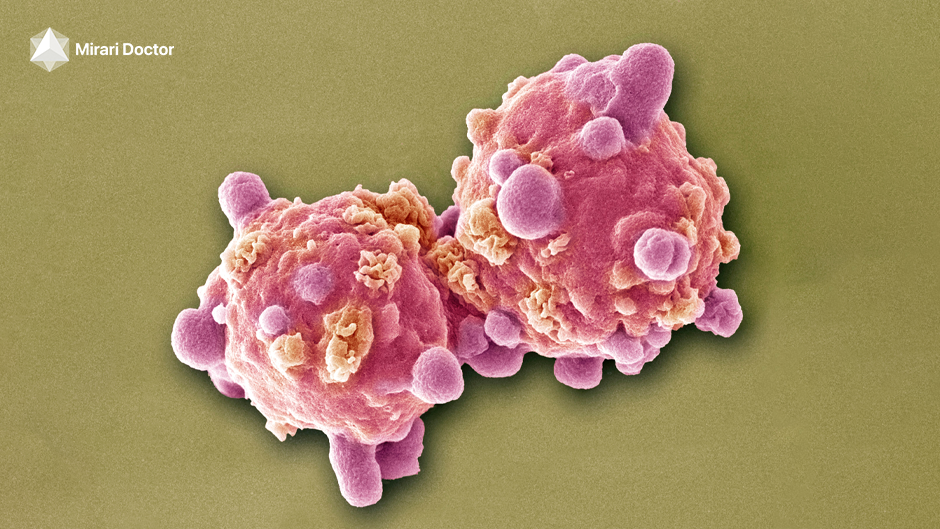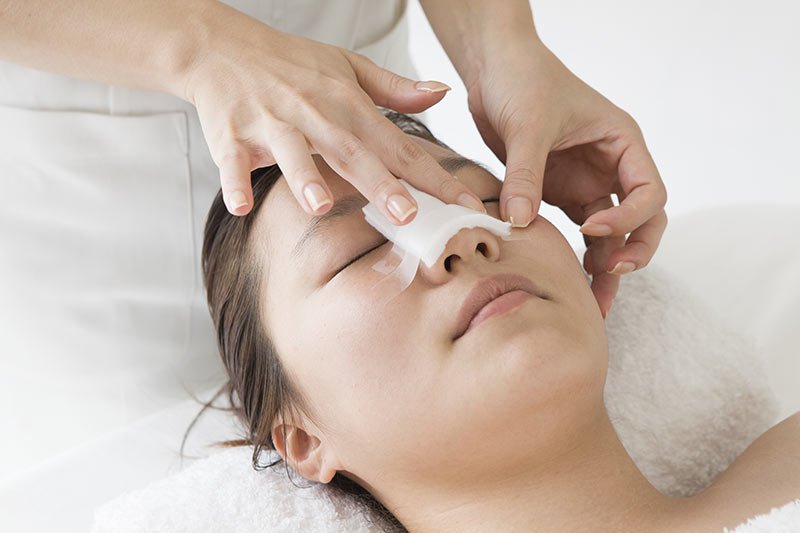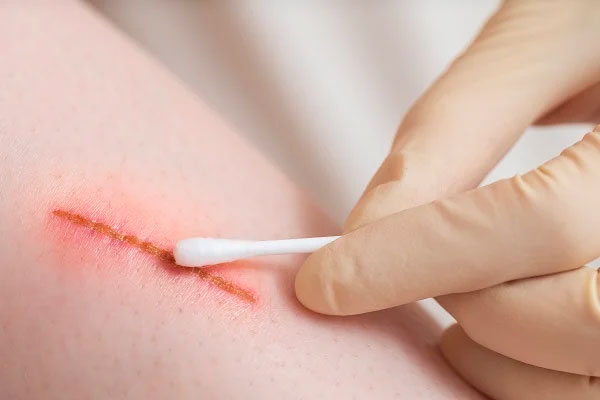Applications of Mirari Cold Plasma
Application for Supporting Immunotherapy
MIRARI COLD PLASMA APPLICATION IN IMMUNOTHERAPY SUPPORT
1. General Information
Mirari Cold Plasma is a cold plasma generator. Cold plasma is a low-energy state of matter containing charged particles, activated molecules, and safe-level ultraviolet radiation. When applied to skin/tissue, cold plasma can eliminate bacteria, reduce inflammation, promote tissue regeneration, and relieve pain without thermal damage, making it effective in musculoskeletal disorders, wounds, dermatology, functional recovery/immunotherapy support, and cosmetic surgery.
Mirari Cold Plasma is certified as a Class B medical device in Vietnam and approved by the U.S. Food and Drug Administration (FDA) for safety and quality standards.
Mirari Cold Plasma is developed by General Vibronics in the U.S. and exclusively distributed by Mirari Import-Export Joint Stock Company in Vietnam.
2. Applications of Mirari Cold Plasma in Immunotherapy Support
Mirari Cold Plasma supports immunotherapy through multiple mechanisms: enhancing immune activation, controlling inflammation, promoting tissue recovery, and providing safe non-invasive antibacterial effects. This technology has a strong scientific foundation and is increasingly applied in various clinical rehabilitation fields.
The Mirari Cold Plasma generator is designed to support immunotherapy, including:
| Rehabilitation/Therapy Type | Clinical Indications for Immunotherapy Support | Mechanism of Action of Mirari Cold Plasma | Research/Clinical Evidence |
| Immunotherapy support in cancer treatment | Fatigue, reduced immunity, chronic inflammation, immune deficiency | – Local NO production modulates immune response, enhances macrophage, T cell, NK cell function – Activates signaling molecules (RONS) to increase cytokine expression and immune cell infiltration in tumor microenvironment – Reduces inflammation and controls excessive immune activation |
Preclinical studies and trials on melanoma and lung cancer patients show effective support when combined with immunotherapy |
| Recovery after prolonged viral/infection | Weakness, inflammation, frequent relapse, slow recovery with low immunity | – Increases NO and reactive oxygen/nitrogen species to enhance virus elimination and immune regulation – Stabilizes immune cell function, promotes lymphocyte recovery, and regulates oxidative stress – Reduces secondary inflammation by balancing pro/anti-inflammatory responses |
Proven safe and enhances immunity in post-COVID-19 fatigue and other infections |
| General health recovery – overall improvement | Functional fatigue, poor sleep, slow recovery post-illness, weak immunity | – Enhances circulation through NO, improves microcirculation – Increases growth factor synthesis, stabilizes immune-endocrine axis – Modulates chronic low-grade inflammation |
Clinical follow-ups show improved quality of life, reduced subclinical inflammation, and increased cellular immunity |
| Post-surgery/chemotherapy immune recovery | Susceptible to infection, slow wound healing, chronic inflammation, weakness | – Reduces cytotoxicity from chemo/radiotherapy – Stimulates tissue regeneration, collagen synthesis, epithelialization – Reduces inflammation and secondary infection risk via oxidative-antibacterial factors |
Case reports show fewer complications, faster recovery, and reduced need for analgesics and antibiotics |
| Chronic disease immunotherapy support (e.g., diabetes, cardiovascular, immune disorders) | Recurrent infections, chronic pain, inflammation, slow recovery | – Improves microcirculation, tissue healing, oxidative stress control – Reduces chronic inflammation, enhances adaptive immune response – Increases cellular energy and restores connective tissue in immunocompromised areas |
Numerous chronic patient studies report reduced ulcers, faster wound healing, decreased prolonged inflammation, and enhanced immunity |
Mechanism of Mirari Cold Plasma: Primarily involves NO synthesis and RONS to activate and regulate immune response, enhancing innate and adaptive defense mechanisms.
Research/Clinical Evidence: Based on case reports and clinical studies on immune recovery in cancer, prolonged infection, and chronic wound treatment, summarized from attached references.
3. Mirari Cold Plasma Usage Procedure
Mirari Cold Plasma is designed for human use without any third-party products. Combining with other products may cause unforeseen harmful effects. Consult a medical professional before combining any products with Mirari Cold Plasma.
3.1. Patient and Treatment Area Preparation
Check Indications and Contraindications
Assess patient condition (not for pacemaker users, pregnant women, severe coagulation disorders, etc.). Discuss treatment goals briefly with the patient.
Clean the treatment area
Wash gently with soap and water and dry. Avoid alcohol or strong disinfectants. Cover open wounds with sterile gauze.
Initial Assessment
Record pain level (VAS), lesion area or characteristics, and check mobility if necessary.
3.2. Device Preparation and Check
Clean plasma tip and accessories
Use safe disinfectant, dry thoroughly. Attach thermal insulation bag if required.
Check power and connections
Ensure stable power supply, indicator lights, and display are functional.
Set treatment mode
Select correct mode (1: infection; 3: antiviral; 7: immunotherapy), place Mirari Plasma pad according to case-specific instructions. Set treatment time: Mild (15 min/session), Moderate-Severe (30 min/session), repeated as prescribed.
3.3. Conduct Therapy
Position the plasma tip
Maintain 0.5–1 mm distance from open wounds or lightly touch soft tissue. Keep tip stable for prescribed duration. Treat multiple areas sequentially and document each position.
Monitor during plasma exposure
Observe skin reactions (warmth, redness, unusual pain/tingling). Pause therapy if discomfort occurs. Do not move the tip continuously over multiple areas in one session.
Maintain optimal distance and duration
Do not exceed recommended time per area. Rest 5 minutes between different zones or if patient shows fatigue.
3.4. Post-Treatment
End session
Turn off device, allow natural cooling (avoid ice directly). Apply moisturizer if needed.
Document post-treatment assessment
Measure pain, record patient feedback, tissue condition, swelling, or exudate. Keep follow-up records for clinical evaluation.
3.5. Device Maintenance and Cleaning
Clean sensor panel
Follow company instructions at miraridoctor.vn. Replace single-use insulation bags after each session; for ePTFE, dry and store in a clean, dry place.
Store device
Avoid moisture, dust, and pack in a box when not in use.
3.6. Safety Notes
Do not alter treatment settings beyond prescribed protocol. Avoid combining with unverified medical cosmetics or topical corticosteroids unless instructed.
4. Immunotherapy Support Protocol Using Mirari Cold Plasma
Key biological mechanisms of Mirari Cold Plasma in immunotherapy support:
Mirari Cold Plasma is an advanced atmospheric-pressure cold plasma technology that generates reactive molecules such as nitric oxide (NO), reactive oxygen/nitrogen species (RONS), safe-level UV, and electromagnetic fields. These components collectively promote tissue healing and control disease, aiding functional recovery and immunotherapy. Key mechanisms include:
a. Antibacterial and Antiviral Effects
RONS effects: Free radicals (O3, O2−, OH, NO, ONOO−…) disrupt bacterial and viral membranes, proteins, and DNA, including antibiotic-resistant strains.
Anti-biofilm: Breaks protective biofilms, enhancing antibacterial efficiency.
Advantages: Kills bacteria, fungi, viruses, reduces secondary infections, promotes a clean wound environment for faster healing.
b. Anti-inflammatory and Immune Modulation
Chronic inflammation reduction: NO and RONS regulate pro-inflammatory cytokines (IL-1, IL-6, TNF-α) and increase anti-inflammatory cytokines (IL-10, TGF-β), shifting inflammation toward acute, benign responses.
Immune stabilization: Adjusts macrophage and leukocyte activity, balances immune response, limits damage to healthy tissue, and promotes tissue repair.
c. Tissue Regeneration and Wound Healing
Fibroblast & epithelial activation: Reactive species stimulate fibroblast proliferation, collagen production, tissue regeneration, and wound filling.
Angiogenesis: NO, RONS, and growth factors (VEGF, FGF, EGF, TGF-β) promote new vessel formation, enhancing nutrient delivery and epithelialization, reducing scarring, and restoring tissue structure after injury, burns, or surgery.
Collagen synthesis and fiber organization: Supports durable tissue with minimal scarring.
d. Pain Control and Functional Recovery
Pain signal reduction: Stabilizes nerve cell membranes, reduces pain transmission, swelling, and edema.
Microcirculation stabilization: Enhances local circulation, nutrient and oxygen delivery, facilitating faster functional recovery.
e. Safety for Healthy Tissue
Low plasma temperature (<40°C): No thermal damage to healthy tissue, suitable for sensitive or chronic injury sites.
Selective targeting: Strengthens healthy tissue resistance, targeting only inflamed or damaged tissue.
4.2. Mirari Cold Plasma Mode Configuration
| Protocol | Mode | |
| 1 | Infection | Antibacterial / Anti-inflammatory |
| 2 | Wound Healing | Wound Recovery |
| 3 | Antiviral Therapy | Viral Treatment |
| 4 | Diabetes Therapy | Diabetes |
| 5 | Prostatitis Therapy | Prostate |
| 6 | Liver / Kidney Therapy | Liver / Kidney |
| 7 | Immunotherapy | Immune Boost |
| 8 | Insomnia | Sleep Aid |
| 9 | Arthritis | Joint Therapy |
| 10 | Dermatitis/Fungus | Skin / Fungal Treatment |
4.3. Mirari Cold Plasma Target Areas
- Localized / focal (0)
- Sacrum (1)
- Prostate & Uterus (2)
- Kidney, Liver & Spleen (3)
- Heart, Gallbladder & Pancreas (4)
- Lungs (5)
- Throat, Lymphatic System & Thyroid (6)
- Nervous System & ENT (7)
4.4. Reference Immunotherapy Support Protocol Using Mirari Cold Plasma
| Mild | Moderate | Severe |
| Mode: 7 (Immunotherapy) Position: 1 (Sacrum) Morning: 15 min, Evening: 15 min |
Mode: 7 (Immunotherapy) Position: 1 (Sacrum) Morning: 30 min, Evening: 30 min |
Mode: 7 (Immunotherapy) Position: 1 (Sacrum) Morning: 30 min, Noon: 30 min, Evening: 30 min |
5. Possible Side Effects (Mostly Mild and Transient)
Ozone (O3) allergy: Most commonly reported. If patient shows allergic reaction during plasma exposure, stop treatment immediately. Usually mild and temporary.
Mild irritation at treatment site: Temporary tingling, slight warmth, redness, or mild stinging. Symptoms are transient and leave no lasting effects.
Rare risk of cold burn/swelling if used incorrectly: Prolonged exposure on the same area, particularly with non-standard devices, may cause redness or swelling. Mirari controls temperature (<40°C), minimizing this risk.
6. Important Notes on Using Mirari Cold Plasma
Mirari Cold Plasma is a Class 2 medical device, intended for use by trained healthcare professionals. Registered in the U.S., Thailand, and Vietnam.
Information provided is educational and not a substitute for professional medical advice.
Individual results may vary. No specific medical outcomes are guaranteed.
Consult a physician or healthcare professional for personalized treatment decisions.









